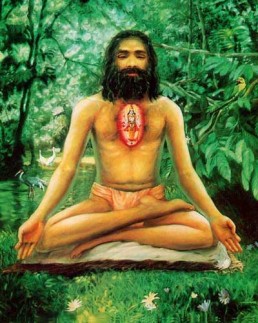Patanjali Yogasutra Introduction
Part 1 – Samādhi-pāda – Yoga and its Aims
1.1
1.2
1.3
1.4
1.5
1.6
1.7
1.8
1.9
1.10
1.11
1.12
1.13
1.14
1.15
1.16
1.17
1.18
1.19
1.20
1.21
1.22
1.23
1.24
1.25
1.26
1.27
1.28
1.29
1.30
1.31
1.32
1.33
1.34
1.35
1.36
1.37
1.38
1.39
1.40
1.41
1.42
1.43
1.44
1.45
1.46
1.47
1.48
1.49
1.50
1.51
Part 2 – Sādhana-pāda – Yoga and its Practice
2.1
2.2
2.3
2.4
2.5
2.6
2.7
2.8
2.9
2.10
2.11
2.12
2.13
2.14
2.15
2.16
2.17
2.18
2.19
2.20
2.21
2.22
2.23
2.24
2.25
2.26
2.27
2.28
2.29
2.30
2.31
2.32
2.33
2.34
2.35
2.36
2.37
2.38
2.39
2.40
2.41
2.42
2.43
2.44
2.45
2.46
2.47
2.48
2.49
2.50
2.51
2.52
2.53
2.54
2.55
Part 3 – Vibhūti-Pāda – Powers
3.1
3.2
3.3
3.4
3.5
3.6
3.7
3.8
3.9
3.10
3.11
3.12
3.13
3.14
3.15
3.16
3.17
3.18
3.19
3.20
3.21
3.22
3.23
3.24
3.25
3.26
3.27
3.28
3.29
3.30
3.31
3.32
3.33
3.34
3.35
3.36
3.37
3.38
3.39
3.40
3.41
3.42
3.43
3.44
3.45
3.46
3.47
3.48
3.49
3.50
3.51
3.52
3.53
3.54
3.55
3.56
Part 4 – Kaivalya-pāda – Liberation
4.1
4.2
4.3
4.4
4.5
4.6
4.7
4.8
4.9
4.10
4.11
4.12
4.13
4.14
4.15
4.16
4.17
4.18
4.19
4.20
4.21
4.22
4.23
4.24
4.25
4.26
4.27
4.28
4.29
4.30
4.31
4.32
4.33
4.34

Commentary on Sri Patanjali Yogasutra by Swami Vivekananda
Samadhi is divided into two varieties. One is called the Samprajnāta, and the other the Asamprajnāta. In the Samprajnata Samadhi come all the powers of controlling nature. It is of four varieties. The first variety is called the Savitarka, when the mind meditates upon an object again and again, by isolating it from other objects. There are two sorts of objects for meditation in the twenty-five categories of the Sankhyas, (1) the twenty-four insentient categories of nature, and (2) the one sentient Purusha. This part of Yoga is based entirely on Sankhya philosophy, about which I have already told you. As you will remember, egoism and will and mind have a common basis, the Chitta or the mind-stuff, out of which they are all manufactured. The mind-stuff takes in the forces of nature, and projects them as thought. There must be something, again, where both force and matter are one. This is called Avyakta, the unmanifested state of nature before creation, and to which, after the end of a cycle, the whole of nature returns, to come out again after another period. Beyond that is the Purusha, the essence of intelligence. Knowledge is power, and as soon as we begin to know a thing, we get power over it; so also when the mind begins to meditate on the different elements, it gains power over them. That sort of meditation where the external gross elements are the objects is called Savitarka. Vitarka means question; Savitarka, with question, questioning the elements, as it were, that they may give their truths and their powers to the man who meditates upon them. There is no liberation in getting powers. It is a worldly search after enjoyments, and there is no enjoyment in this life; all search for enjoyment is vain; this is the old, old lesson which man finds so hard to learn. When he does learn it, he gets out of the universe and becomes free. The possession of what are called occult powers is only intensifying the world, and in the end, intensifying suffering. Though as a scientist Patanjali is bound to point out the possibilities of this science, he never misses an opportunity to warn us against these powers.
Again, in the very same meditation, when one struggles to take the elements out of time and space, and think of them as they are, it is called Nirvitarka, without question. When the meditation goes a step higher, and takes the Tanmātras as its object, and thinks of them as in time and space, it is called Savichāra, with discrimination; and when in the same meditation one eliminates time and space, and thinks of the fine elements as they are, it is called Nirvichāra, without discrimination. The next step is when the elements are given up, both gross and fine, and the object of meditation is the interior organ, the thinking organ. When the thinking organ is thought of as bereft of the qualities of activity and dullness, it is then called Sānanda, the blissful Samadhi. When the mind itself is the object of meditation, when meditation becomes very ripe and concentrated, when all ideas of the gross and fine materials are given up, when the Sattva state only of the Ego remains, but differentiated from all other objects, it is called Sāsmitā Samadhi. The man who has attained to this has attained to what is called in the Vedas “bereft of body”. He can think of himself as without his gross body; but he will have to think of himself as with a fine body. Those that in this state get merged in nature without attaining the goal are called Prakritilayas, but those who do not stop even there reach the goal, which is freedom.
Yogasutra – Verse 1.17 – Yogasutra-1.17-vitarkavicārānandā – In Sanskrit with English Transliteration, Translation, Meaning and Commentary by Swami Vivekananda – Yogasutra-1-17
